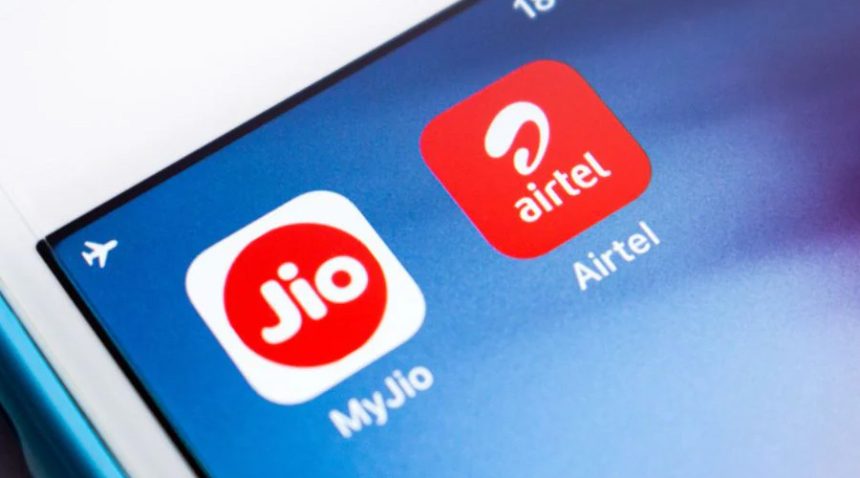From remote villages to bustling cities, faster and more reliable connectivity is on the horizon
India, with its vast and diverse landscape, has long grappled with the challenge of providing comprehensive internet connectivity to its population. Last year, the country boasted approximately 954.40 million internet subscribers, reflecting a significant increase from 251.59 million in March 2014. This growth corresponds to a Compound Annual Growth Rate (CAGR) of 14.26% over the decade. Despite this impressive surge, a substantial portion of the population, particularly in rural areas, remains unconnected. Recent collaborations involving Starlink, Airtel, and Jio aim to bridge this connectivity gap, promising to transform India’s digital landscape.
Current State of Internet Penetration in India
In April 2024, out of 6,44,131 villages in India, 6,12,952 villages (approximately 95.15%) had access to 3G/4G mobile connectivity. However, this statistic indicates that around 31,179 villages still lack internet access, highlighting the persistent digital divide. Furthermore, while urban areas have seen rapid adoption of internet services, rural regions lag, with internet penetration rates significantly lower than their urban counterparts.
Starlink’s Foray into the Indian Market
Elon Musk’s Starlink, a satellite-based internet service under SpaceX, has been eyeing the Indian market to provide high-speed internet, especially in remote and underserved regions. In a strategic move, Starlink has entered into agreements with India’s leading telecom operators, Reliance Jio and Bharti Airtel, to bring satellite internet services to the country. These partnerships aim to leverage the existing infrastructure of these telecom giants to distribute Starlink’s devices, thereby enhancing satellite coverage across India.
Reliance Jio’s Collaboration with Starlink
Reliance Jio, led by Mukesh Ambani, has announced a partnership with SpaceX to introduce Starlink’s satellite internet services in India. This collaboration aims to provide enhanced connectivity, especially to rural and remote regions of the subcontinent. Jio Platforms will offer these services through its retail and online channels once SpaceX receives the necessary authorizations from Indian authorities. This partnership marks a significant stride toward expansive broadband coverage in India.
Bharti Airtel’s Engagement with Starlink
Bharti Airtel, India’s second-largest telecom operator, has also signed an agreement with Elon Musk’s Starlink to potentially bring satellite internet services to India, contingent upon government approval. This partnership aims to bridge the digital divide in India’s underserved remote and mountainous regions, where a significant portion of the population lacks internet access. With over 6,900 active satellites, Starlink offers low-latency broadband, addressing connectivity gaps.
Potential Impact on India’s Connectivity Landscape
The collaborations between Starlink and major Indian telecom operators have the potential to revolutionize internet connectivity in India. By leveraging satellite technology, these partnerships aim to provide high-speed internet access to remote and rural areas where traditional infrastructure is challenging to deploy. This initiative could significantly reduce the digital divide in India, where a substantial portion of the population lacks internet access.
Challenges and Considerations
While the introduction of satellite broadband through Airtel and Jio will reshape India’s broadband market, it also introduces a new competitor to traditional fiber and wireless services. Regional telecom operators and government-run entities like BSNL may struggle to compete with Airtel, Jio, and Starlink’s advanced technology and financial resources. The shift toward satellite connectivity could lead to industry consolidation, reducing competition.
Regulatory and Market Dynamics
The entry of satellite-based internet services like Starlink into the Indian market presents both opportunities and challenges. While these services can complement existing networks by extending high-speed internet to remote areas, they are unlikely to pose a major threat to Indian telecom giants Jio and Bharti Airtel, whose home broadband plans offer better pricing, higher speeds, and unlimited data. Given India’s price-sensitive market, Starlink’s higher costs and speed limitations make it less competitive for urban users, reinforcing its role in serving rural and underserved regions rather than competing directly with established broadband services.
The collaborations between Starlink, Airtel, and Jio represent a significant step toward bridging India’s connectivity gap. By integrating satellite technology with existing telecom infrastructures, these partnerships aim to provide high-speed internet access to underserved regions, thereby promoting digital inclusion and economic growth. However, addressing challenges related to affordability, regulatory approvals, and market competition will be crucial to ensure the success and sustainability of these initiatives.






